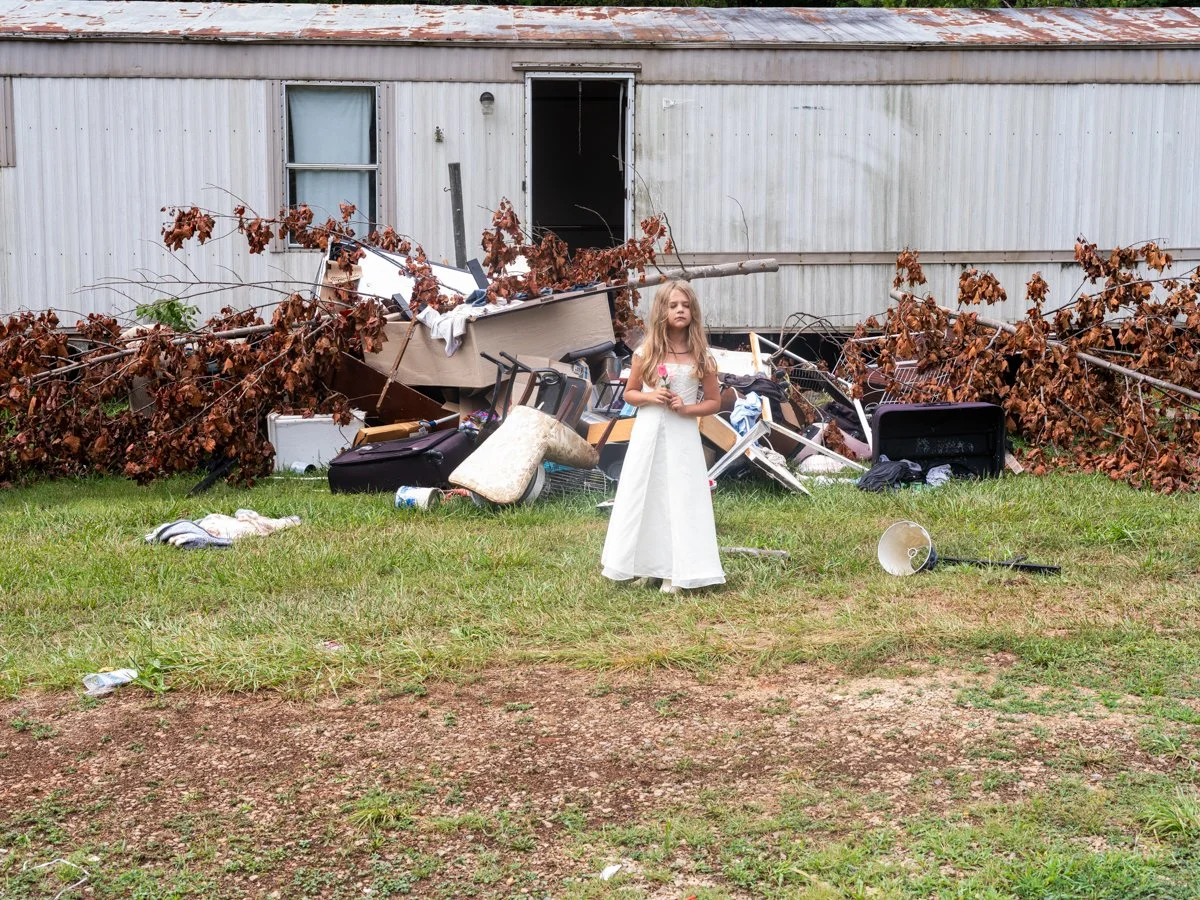On the Inside
My work is primarily of my family, but it is also about my experiences growing up in and out of foster care. I often felt disconnected even from the idea of family. After starting my own family, that sense of alienation lingered. We were poor, and like so many raised in unstable families or in homes where decisions were made from a position of poverty, relationships were most often superficial even within our tight-knit communities of kind. A class of people doing the same things, while dreaming of doing something else. I didn’t understand the potential of a big dream. I didn’t have the capacity to wash the poverty from my thinking.
Photography enables a different way for me to experience my life and my family. While inspecting the images of my family and friends, I try to identify what I might have missed while living in that moment. I can examine the unspoken complexities of my relationships or choose to not see them. I can ignore the confederate flag hanging in the yard, the drugs on the table, a young child’s room full of soda cans, or the piles of trash in every corner of an image. I can reminisce about these “good times,” laughing about the little horrors that we found funny while continuing to raise my family to be just like me, fueling a generational legacy of poverty. When human capital is broken, we don’t live right, and we don’t dream right.
We know that not all people who suffer from drug addiction, who are racist, or who lack a formal education are poor, but poverty breeds like-minded daydreams of escape. When I would daydream, I was always the hero, and my villains were always the people who lived outside of my community. I blamed my misfortunes on those that do not look like me and on those who had more than me. To where I escape may be different from others, but the basis for my dreams was all the same. I am like this because of you.
Documenting my family also introduces a certain distance, even in our most private moments. While photographing brings me closer to the details of our lives, it also keeps me from fully participating in them. The camera can act as a barrier, protecting me from the vulnerabilities of these relationships while still allowing me to engage with them on a meaningful level.
Through this process, I can benefit by learning more about myself—my strengths, insecurities, and how I might learn something from an image that allows me to navigate my family life. Each photograph is a way for me to process the mixed emotions of being part of a family that's both deeply connected and sometimes distant. My work tells not just my family's story but also my own—a story of love, conflict, closeness, and separation.











